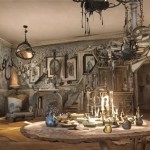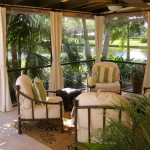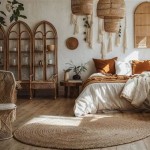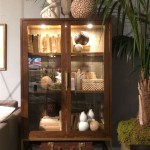How To Decorate Your Home With Things You Already Have
Decorating a home does not necessarily require significant financial investment. Often, a fresh and inviting aesthetic can be achieved by reimagining and repurposing existing possessions. This approach not only saves money but also promotes sustainability and allows for a more personalized and meaningful living space. This article explores strategies for decorating a home utilizing items already present, creating a transformed environment without incurring additional expenses.
Reassessing and Decluttering Existing Items
The initial step in decorating with existing items involves a thorough assessment of all possessions. This process entails evaluating each item's function, aesthetic appeal, and sentimental value. Begin by decluttering spaces, removing items that are no longer needed, used, or appreciated. Consider donating, selling, or repurposing these discarded items. This fundamental step creates space and provides a clearer perspective on the remaining resources available for decoration.
A useful method for decluttering is the "four-box method." This involves creating four designated boxes or areas: "Keep," "Donate/Sell," "Relocate," and "Trash." As each item is evaluated, it is placed into the appropriate category. The "Keep" box contains items intended for use in the decorating process. The "Donate/Sell" box holds items that are in good condition but no longer serve a purpose in the home. The "Relocate" box is for items that might be better suited to a different room or area of the house. Finally, the "Trash" box contains items that are beyond repair or unusable. This structured approach ensures a systematic and efficient decluttering process.
Once the decluttering process is complete, examine the remaining items with a fresh perspective. Consider their potential beyond their original purpose. For example, an old ladder could be repurposed as a bookshelf, or a collection of vintage scarves could be framed as wall art. This imaginative approach is crucial for transforming existing items into decorative elements.
Reorganizing Furniture and Accessories
Rearranging furniture is a simple yet effective way to alter the ambiance of a room. Experiment with different layouts to optimize space and create new focal points. Consider the flow of traffic and the natural light sources when rearranging furniture. Small changes can have a significant impact on the overall feel of the space.
Instead of automatically purchasing new furniture, explore alternative configurations. For example, a sofa that was previously placed against a wall could be moved to the center of the room to create a more intimate seating area. A dresser could be repurposed as a media console. Reorganizing furniture not only alters the appearance of the room but also encourages a more functional and efficient use of the available space.
Accessories, such as lamps, cushions, and artwork, can also be strategically rearranged to create a new look. Grouping similar items together can create a cohesive and visually appealing display. For example, a collection of vases can be grouped on a shelf, or a gallery wall can be created with existing artwork. Consider the color palette and textures of the accessories when arranging them to create a harmonious aesthetic.
Repositioning artwork is another impactful way to refresh a room. Experiment with different heights and arrangements to find the most visually appealing placement. Consider the size and shape of the artwork in relation to the wall space. A single statement piece can be hung above a sofa or fireplace to create a focal point. Smaller pieces can be grouped together to create a gallery wall. Changing the artwork's location can breathe new life into a room without requiring any new purchases.
Repurposing and Upcycling Existing Items
Repurposing and upcycling existing items are creative ways to transform ordinary objects into unique decorative pieces. This approach not only adds character to a home but also promotes sustainability by reducing waste. Look for opportunities to give old items a new lease on life through creative modifications.
Consider the potential of everyday items. For instance, glass jars can be transformed into vases or candle holders. Empty wine bottles can be painted and used as decorative accents. Old books can be stacked to create unique side tables or used as decorative displays on shelves. These simple transformations can add a touch of personality and charm to any room.
Upcycling involves modifying existing items to create something new and improved. For example, an old t-shirt can be cut and sewn into decorative pillow covers. An outdated dresser can be painted and have new hardware installed to create a more modern look. Pallets can be disassembled and used to create rustic wall decor or furniture. Upcycling not only saves money but also allows for creative expression and the creation of one-of-a-kind pieces.
Another creative idea is to transform old picture frames. They can be repainted, distressed, or used to frame fabric scraps or pressed flowers. These framed creations can then be displayed on walls or shelves, adding a personal touch to the decor. The possibilities for repurposing and upcycling are endless, limited only by imagination and creativity.
Textiles offer numerous opportunities for repurposing. Old curtains can be transformed into throw pillows or table runners. Scraps of fabric can be used to create patchwork quilts or wall hangings. Old blankets can be cut and sewn into pet beds. Repurposing textiles is an eco-friendly way to add color, texture, and personality to a home.
Furthermore, consider the potential of natural elements. Branches, leaves, and stones can be used to create decorative displays. A collection of seashells can be arranged in a glass jar. Pine cones can be painted and used as holiday decorations. These natural elements bring a touch of the outdoors into the home and create a calming and serene atmosphere.
By embracing repurposing and upcycling, individuals can transform their homes into unique and personalized spaces without spending a fortune. This approach not only saves money but also promotes sustainability and encourages creativity.
Utilizing Color and Light Effectively
Color and light play a crucial role in creating the desired ambiance in a home. Utilizing existing color schemes and lighting fixtures effectively can significantly enhance the overall aesthetic without requiring any new purchases. Strategic adjustments can transform the mood and feel of any room.
Evaluate the existing color palette of the home. Consider how the colors interact with each other and how they affect the overall mood. Use existing paint colors to create a cohesive and harmonious look throughout the home. If repainting is not an option, consider adding pops of color through accessories, such as cushions, throws, and artwork. Introducing complementary colors can create a more vibrant and dynamic space.
Lighting is another essential element to consider. Optimize natural light by keeping windows clean and unobstructed. Use sheer curtains to diffuse sunlight and create a soft and inviting atmosphere. Maximize the use of existing lighting fixtures by strategically positioning them to highlight focal points and create depth. Add lamps to create a warm and inviting ambiance in the evenings.
Rearranging lamps can significantly alter the lighting scheme of a room. Move lamps from one room to another to experiment with different lighting effects. Consider the height and placement of lamps to create the desired mood. Table lamps are ideal for creating a cozy and intimate atmosphere, while floor lamps are better suited for illuminating larger areas. Using a combination of different types of lighting can create a more dynamic and visually appealing space.
Mirrors are an effective tool for enhancing natural light and creating the illusion of more space. Position mirrors strategically to reflect light and create a brighter and more open feel. A large mirror placed opposite a window can significantly enhance the amount of natural light in a room. Mirrors can also be used to create a focal point or to add visual interest to a wall.
Furthermore, consider the color temperature of the light bulbs used in existing lighting fixtures. Warm-toned light bulbs create a cozy and inviting atmosphere, while cool-toned light bulbs are better suited for task lighting. Experiment with different color temperatures to find the most suitable lighting for each room.
By carefully considering color and light, individuals can transform their homes into visually appealing and inviting spaces without incurring new expenses. A strategic approach to color and lighting can significantly enhance the overall aesthetic and create a more comfortable and harmonious living environment.

7 Ways To Decorate With Things You Already Have Easy Home Decor
Decorate Your Living Room On A Low Budget 5 Quick Ideas Sass

Ideas For Decorating Bookshelves Inspiration From West Elm

Decorating With Nature Greenhouse Studio

Low Budget Home Design Affordable Decor Ideas For Every

The 40 Best Shelf Decor Ideas For A Stylish Home Joyful Derivatives

10 Home Decor Themes You Ll Love And How To Pick One Bay
How To Decorate Your Home Feel And Look Rich When On A Budget

9 Diy Decor Ideas You Can Make From Things Around The House Brightly

20 Sustainable And Ecofriendly Home Décor Ideas You Should Try







